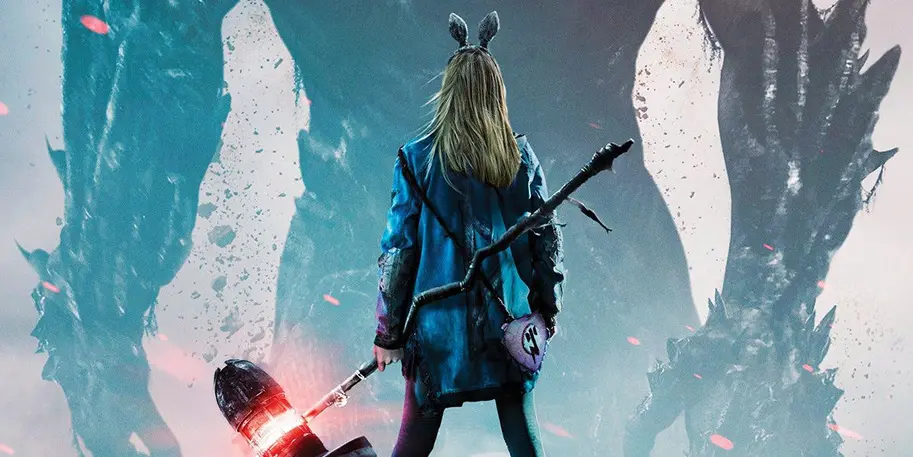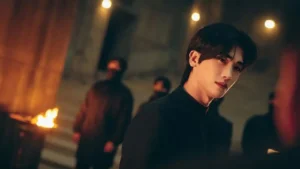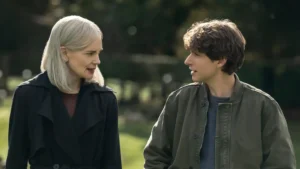Adapted from the graphic novel of the same name by Joe Kelly (who also adapted the screenplay), I Kill Giants is a story about Barbara Thorsen (Madison Wolfe), a young girl who hides from her grief inside her own imagination. Directed by Anders Walter in his feature debut, it also stars Imogen Poots (Mobile Homes, The Art of Self-Defense, The Father) and Zoe Saldana (Amsterdam, Avatar, Lioness).
I Kill Giants is a film I wish I found less irritating, but it’s also one that, more so than most, I know isn’t meant for me. It’s bizarre enough that the heroine always wearing a battered pair of bunny ears is perhaps the least unusual thing about it, but it’s also oddly touching and sensitive, and will inevitably mean a lot to the right kind of kid who finds it when they need it most.
Me, though, yeah – I mostly found it to be a little too precious and off-beat for its own good, to such an extent that I wondered, more than once, if the lessons it ended up teaching might be the wrong ones for the audience it’ll most likely mean something to.
Barbara is a difficult tween who lives on windswept, rain-lashed Long Island in a house on a bluff overlooking the coast. Her sister, Karen (Poots), presides over Barbara and her obnoxious brother; their parents’ absence isn’t explained until two-thirds into the film. Poots is very good here, as she attempts to mother two kids whose zealousness keeps them at odds with each other and at arm’s length from her.
Neither have much interest in the real, mundane world they live in; the brother squats on the couch raging at first-person shooters, and Barbara devotes herself to pen-and-paper role-playing games.
The difference is that for Barbara, the fantastical isn’t a game. She is, she insists, a giant slayer. The bunny ears are a tribute to her “spirit guide”. The concoctions she brews in glass jars out of gummy bears and glitter and scrapings of woodland fungus are “giant bait.” The ratty purse she clutches contains, according to her, a giant-smiting mythical hammer.
These are the eccentricities that keep her ostracised and friendless at school, but also that attract the attention of Sophia (Sydney Wade), a new girl transplanted from Leeds, England, and the new school counsellor (Saldana) who tries to break through to her.
The thing is Barbara’s only interested in keeping people out. She’s played by an excellent young actor in Wolfe, and every aspect of the film that works does so because of her. She finds fierceness and a wit and an anger that’s beyond her years, without ever appearing as anything but a frightened 12-year-old. For all her intricate traps, schemes, and protective amulets that she scatters around school, what she’s totally unequipped for are her own feelings.
It’s a good thing, too, because without a performance as potent at the one Wolfe delivers, I Kill Giants wouldn’t have worked for me at all. The reasons behind Barbara’s fantasy life aren’t ineffective, but they are obvious, and the way the character is written makes it difficult to buy into her emotional plight. She’s rude and has no patience for stupidity, which as a rude person with no patience for stupidity I found relatable but unconvincing.
There’s never a sense that this isn’t a character; a fiction, a mouthpiece for adolescent anxieties. Her absurdly quick wit is funny without being endearing, because no person I’ve ever met actually speaks that way.

Image from ‘I Kill Giants’ (RLJE Films)
I Kill Giants makes a point that Barbara is an extremely specific and complicated heroine. The film is about her trauma, the way she processes grief, not trauma and grief themselves. But Barbara is whip-smart, and so beloved by literally every reasonable person in her town that you have to wonder if certain kids of a certain age in a certain situation might miss that distinction. We never really meet anyone who isn’t cartoonishly antagonistic or totally on-board with Barbara’s delusions, which is a level of moral simplicity that a story like this doesn’t benefit from.
In the meantime, to honour the film’s (excellent) poster and the marketing’s upselling of Chris Columbus’s producing credit, the giants appear to both Barbara and the audience. They’re formidable enough but deployed infrequently and strategically, partly because that’s the point, and also, I suspect, for budget reasons. The climactic sequence in particular, set during a seaside thunderstorm, is so steeped in obscuring grey weather that you can’t help but notice that Anders Walter (otherwise very good) is trying to hide ropey effects.
There’s a lot to like about I Kill Giants, from the fact it features almost exclusively female characters to the gutsy ending that is content to challenge Barbara’s issues rather than explicitly “fix” them. But its darker undercurrents weren’t enough, at least for me, to distract from its cutesy, obvious construction.
The overwhelming sense of characters peeking at the script was never quite overcome. And that the point was buried beneath so many layers of quirky affectation made the story of I Kill Giants feel second-hand; like it was being told by someone who remembered a girl like Barbara from school, not someone who had actually been her growing up.




